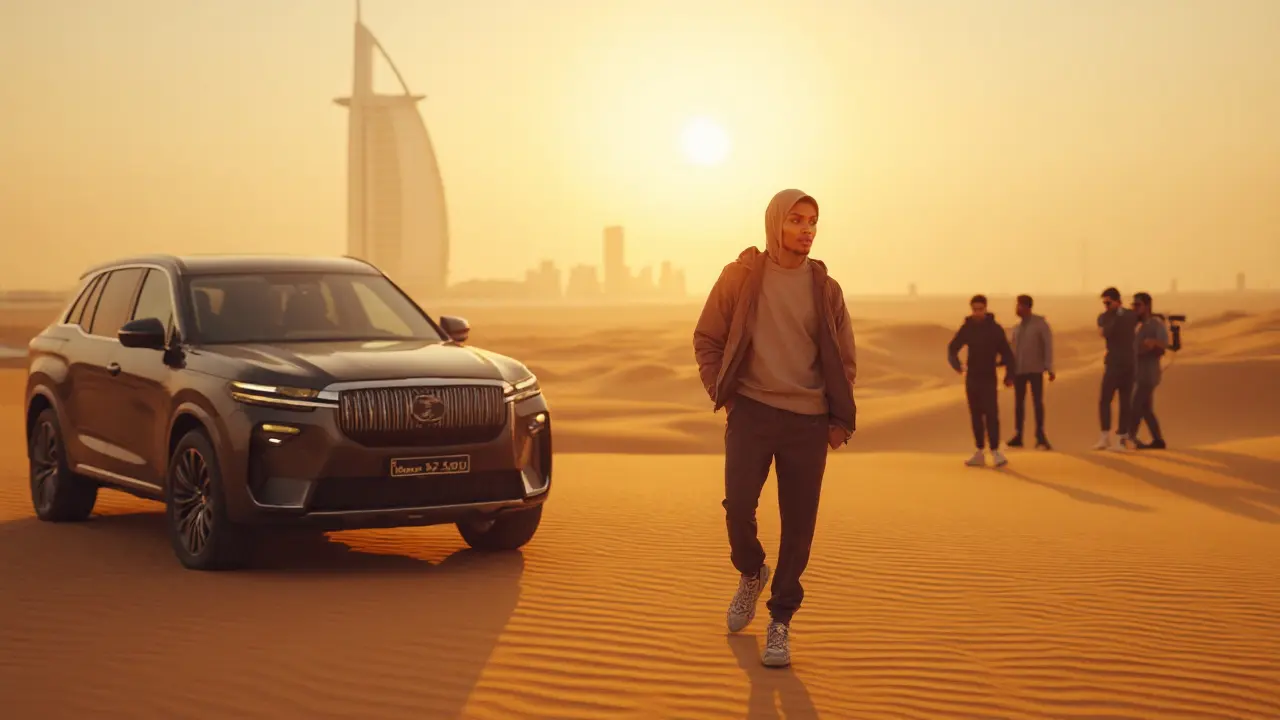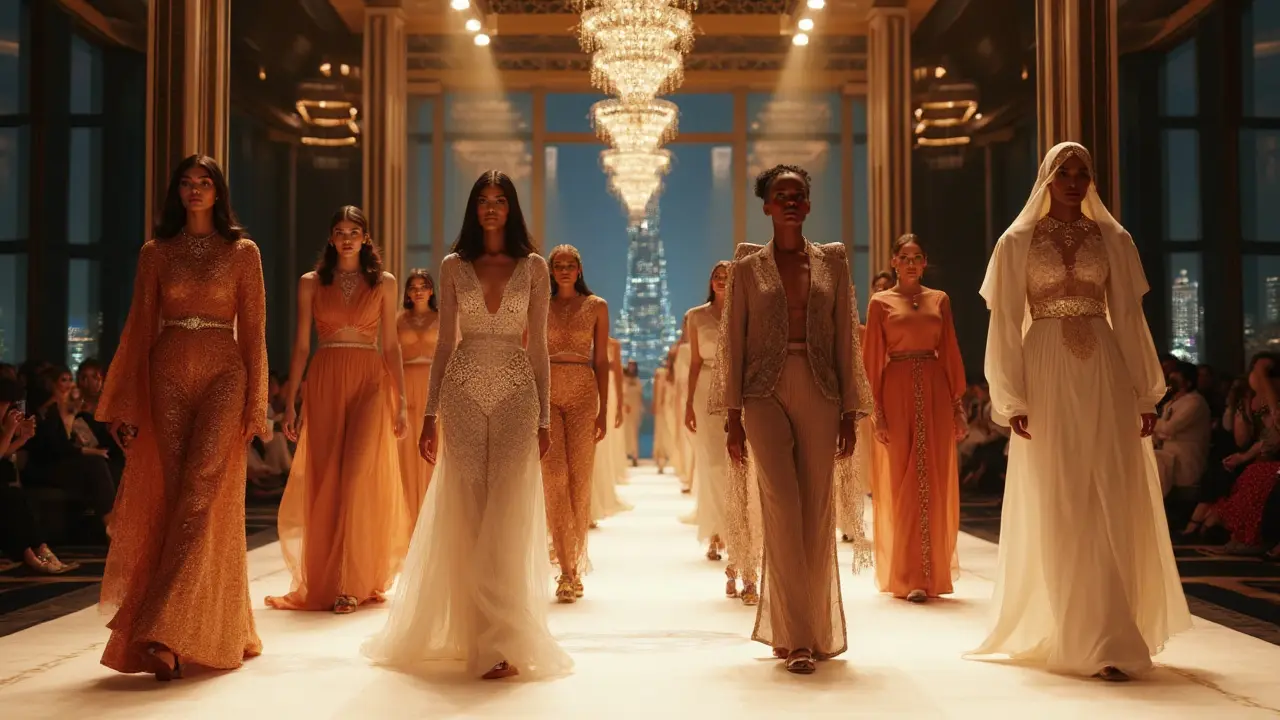Demand for models is a market indicator that measures how many brands, designers, and media producers are actively seeking talent for runway, advertising, and digital campaigns in a given region. In Dubai, the indicator has surged over the past three years due to the city’s luxury retail boom, high‑profile events, and a fast‑growing influencer economy.
Key Takeaways
- Dubai’s fashion‑runway demand rose 28% YoY in 2024, driven by new luxury boutiques.
- Commercial and lifestyle modeling now accounts for 45% of all booked gigs.
- Social‑media influencers with 100k+ followers command rates comparable to traditional runway talent.
- Visa‑friendly talent‑agency policies make it easier for expatriate models to work.
- Average hourly rates range from AED 500 for newcomers to AED 4,500 for established faces.
Understanding the Modeling Landscape in Dubai
Dubai’s modeling ecosystem is a blend of high‑glamour runway shows, fast‑paced commercial shoots, and a thriving digital‑content sector. The city hosts events like Dubai Fashion Week, Middle East’s largest luxury showcase, and a year‑round calendar of product launches, hospitality promos, and tourism campaigns. This diversity fuels a steady flow of assignments, creating a robust demand curve for different model types.
Core Entities Shaping the Market
Fashion models are typically tall, runway‑trained talent who walk for designers and appear in high‑end editorial spreads. Their value lies in the ability to convey a brand’s avant‑garde aesthetic.
Commercial models focus on product‑centric work-think cosmetics, automotive, and hospitality ads. They often have relatable looks and strong on‑camera presence.
Talent agencies act as intermediaries, matching models with clients, handling contracts, and providing visa support.
Casting directors are hired by brands to select the right faces for campaigns, evaluating portfolios, measurements, and social‑media reach.
Social‑media influencers leverage platforms like Instagram and TikTok, turning follower counts into bargaining power for brand collaborations.
Model rates denote the compensation structures-hourly, per‑day, or per‑campaign-often negotiated according to experience, market demand, and exclusivity clauses.
Visa regulations in the UAE allow freelance talent to obtain a temporary work permit through agencies, simplifying cross‑border assignments.
Brand partnerships refer to long‑term collaborations where a model becomes a brand ambassador, receiving fixed fees and profit‑share.
Benefits of Working in Dubai’s Modeling Scene
Beyond the glitz, Dubai offers tangible advantages:
- High earnings: The city’s tax‑free environment means models keep a larger share of their fees.
- International exposure: Global brands shoot here, giving models a passport‑level portfolio.
- Networking hubs: Events like the Dubai Design Week bring together creatives, stylists, and photographers.
- Infrastructure: World‑class studios, fashion schools, and production houses cut down logistics costs.
Types of Modeling Opportunities Available in Dubai
Whether you’re 5’8” with runway aspirations or a charismatic on‑camera personality, Dubai has a niche:
- Runway Modeling: Primarily for fashion weeks, luxury boutiques, and gala events.
- Commercial & Lifestyle: Ads for hotels, cars, consumer goods, and tourism.
- Fit Modeling: Assisting designers with garment construction, often behind‑the‑scenes.
- Influencer Collaborations: Sponsored posts, story takeovers, and product placements.
- Event Hosting & Brand Ambassadorship: Presenting at launches, exhibitions, and high‑net‑worth gatherings.
How to Find Modeling Jobs in Dubai
Getting your foot in the door requires a mix of online research and personal networking. Here’s a practical roadmap:
- Register with reputable agencies: Look for agencies listed with the UAE Ministry of Economy; they usually assist with work permits.
- Leverage social platforms: Maintain an Instagram portfolio, tag relevant brands, and use hashtags like #DubaiModel, #UAEfashion.
- Attend open casting calls: Brands often announce them on their websites or via industry newsletters.
- Join modeling forums: Communities such as Dubai Model Network on Facebook share real‑time job leads.
- Network at fashion events: Even as a guest, you can meet photographers and stylists who need fresh faces.

What to Expect During a Typical Shoot
A standard commercial shoot in Dubai runs 4‑6 hours, includes a makeup artist, stylist, and a photographer. Expect a call‑sheet outlining call‑time, location (often a studio in Business Bay or an outdoor venue at Al Qudra), wardrobe, and any required permits. Models usually receive a brief on brand tone-whether it’s sleek luxury or relaxed lifestyle.
Pricing, Rates, and Booking Process
Model rates vary by experience and assignment type. Below is a quick snapshot:
| Model Type | Typical Hourly Rate (AED) | Primary Sector | Demand Score (1‑10) |
|---|---|---|---|
| Runway/Fashion | 1,800 - 4,500 | Luxury fashion, haute couture | 8 |
| Commercial/Lifestyle | 800 - 2,200 | Advertising, hospitality | 9 |
| Influencer (100k‑500k followers) | 1,200 - 3,000 (per campaign) | Social media, brand ambassadorship | 7 |
Booking usually starts with a contract drafted by the agency, covering usage rights, exclusivity, and payment schedule (often 50% upfront, remainder after delivery). Payments are processed via bank transfer in AED.
Safety and Professional Conduct Tips
- Always verify the agency’s license through the UAE Ministry of Economy portal.
- Never sign a contract that lacks clear payment terms or job description.
- Use a trusted transportation service for night shoots; Dubai’s ride‑hailing apps track routes.
- Keep a copy of your visa and work permit on hand; agencies usually handle the paperwork but you remain responsible.
- Set personal boundaries-legitimate clients respect limits on nudity, location, and working hours.
Comparison Table: Modeling vs. Influencer Work in Dubai
| Aspect | Traditional Modeling | Influencer Work |
|---|---|---|
| Entry Barrier | Agency representation required | Large follower base needed |
| Typical Compensation | Hourly or per‑day rates | Flat campaign fee + performance bonuses |
| Control Over Image | Limited - brand direction dominates | High - creator curates content |
| Legal Framework | Standard contract with usage rights | Sponsored content disclosure regulations |
| Career Longevity | 10‑15 years typical | Can extend indefinitely with audience growth |
Frequently Asked Questions
Frequently Asked Questions
Is a modeling agency mandatory to work in Dubai?
While freelancers can find one‑off gigs, most reputable brands require agency representation for contract handling, visa support, and payment security.
What are the most in‑demand model types right now?
Commercial/lifestyle models dominate the market, followed closely by runway talent during fashion weeks. Influencers with strong engagement are rapidly gaining parity.
How much can a new model expect to earn per shoot?
Newcomers typically earn AED 500‑800 per hour for commercial shoots, with higher rates for runway assignments after a few booked shows.
Are there any visa restrictions for foreign models?
Foreign talent can obtain a temporary work permit through a licensed agency. The permit is usually valid for 6‑12 months and can be renewed if the model maintains active assignments.
How do I protect myself from scams?
Verify agency credentials on the UAE Ministry of Economy website, demand a written contract, and never pay upfront fees for a job. Use reputable payment platforms for transfers.
What skills boost a model’s marketability?
Professional runway walk, strong posing fundamentals, and comfortable on‑camera presence are core. Adding acting, dance, or multilingual abilities can open niche markets like tourism promos.
Is it better to specialize or stay versatile?
Early in a career, versatility helps land more gigs. As you build a reputation, specializing-e.g., high‑fashion runway-can command premium rates.

Take the Next Step
If you’re ready to test the waters, start by polishing your portfolio, reaching out to a licensed Dubai agency, and brushing up on the visa requirements. The city’s demand for models isn’t slowing down, and the right preparation can turn a single casting call into a long‑term career.
